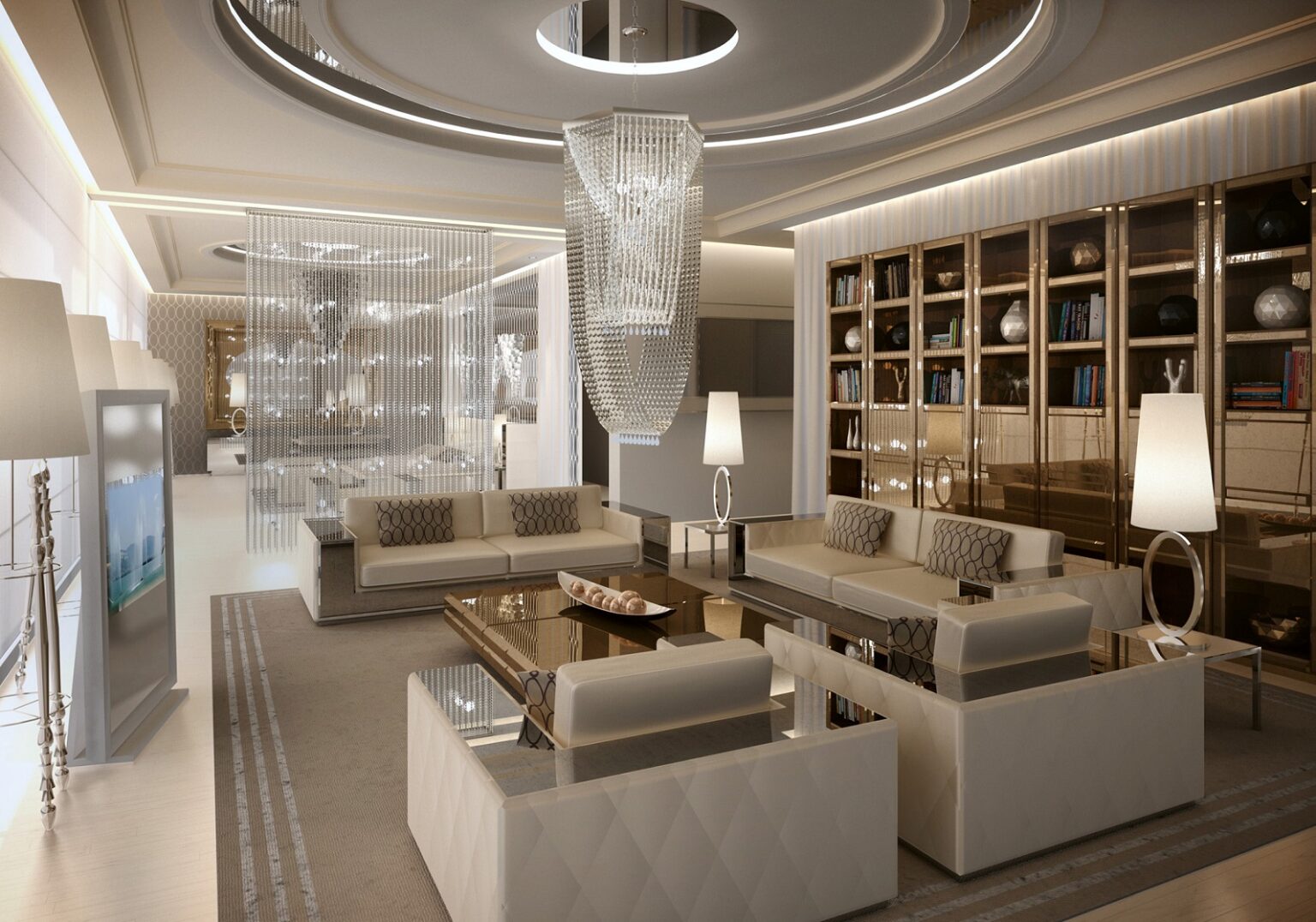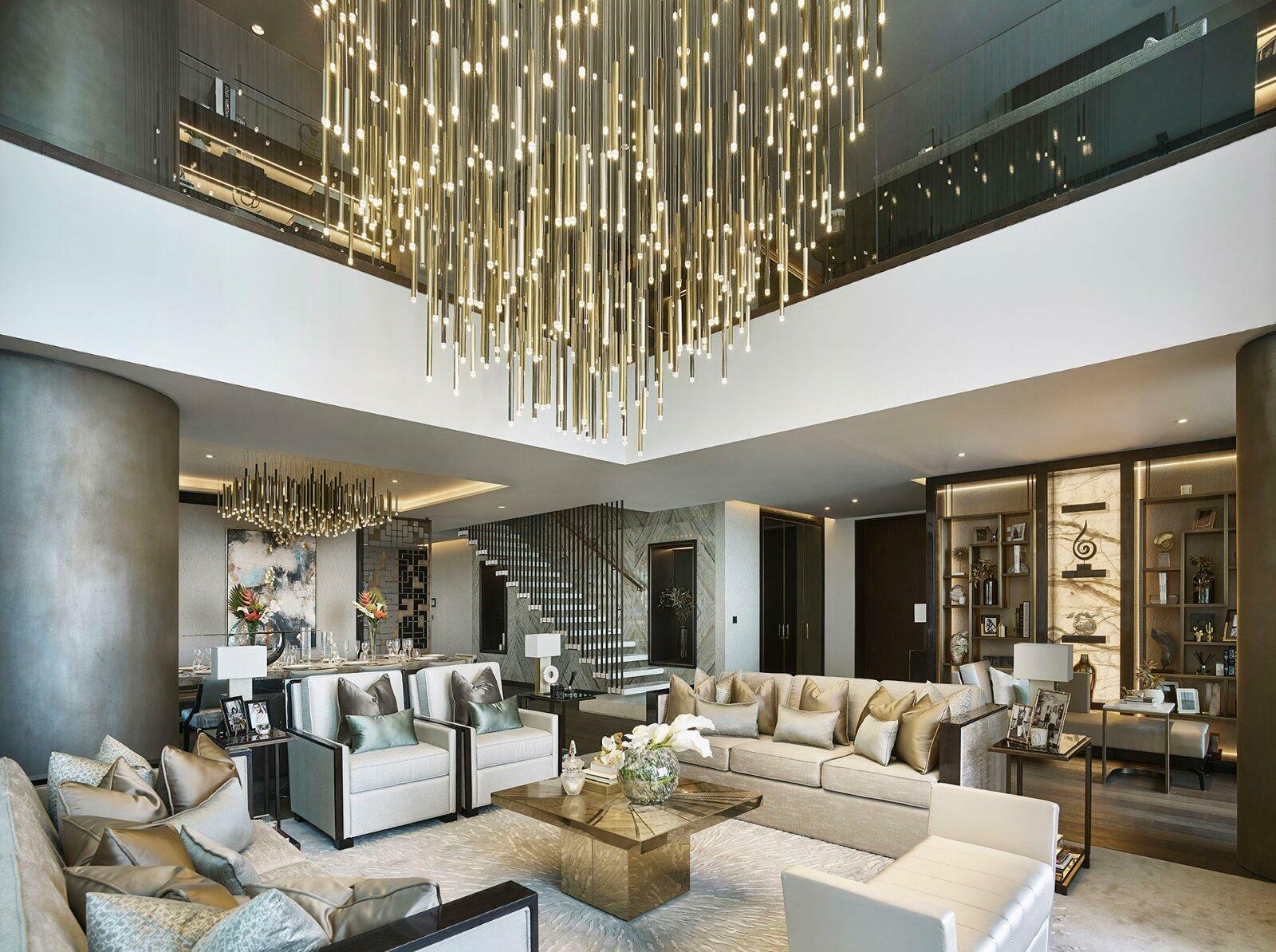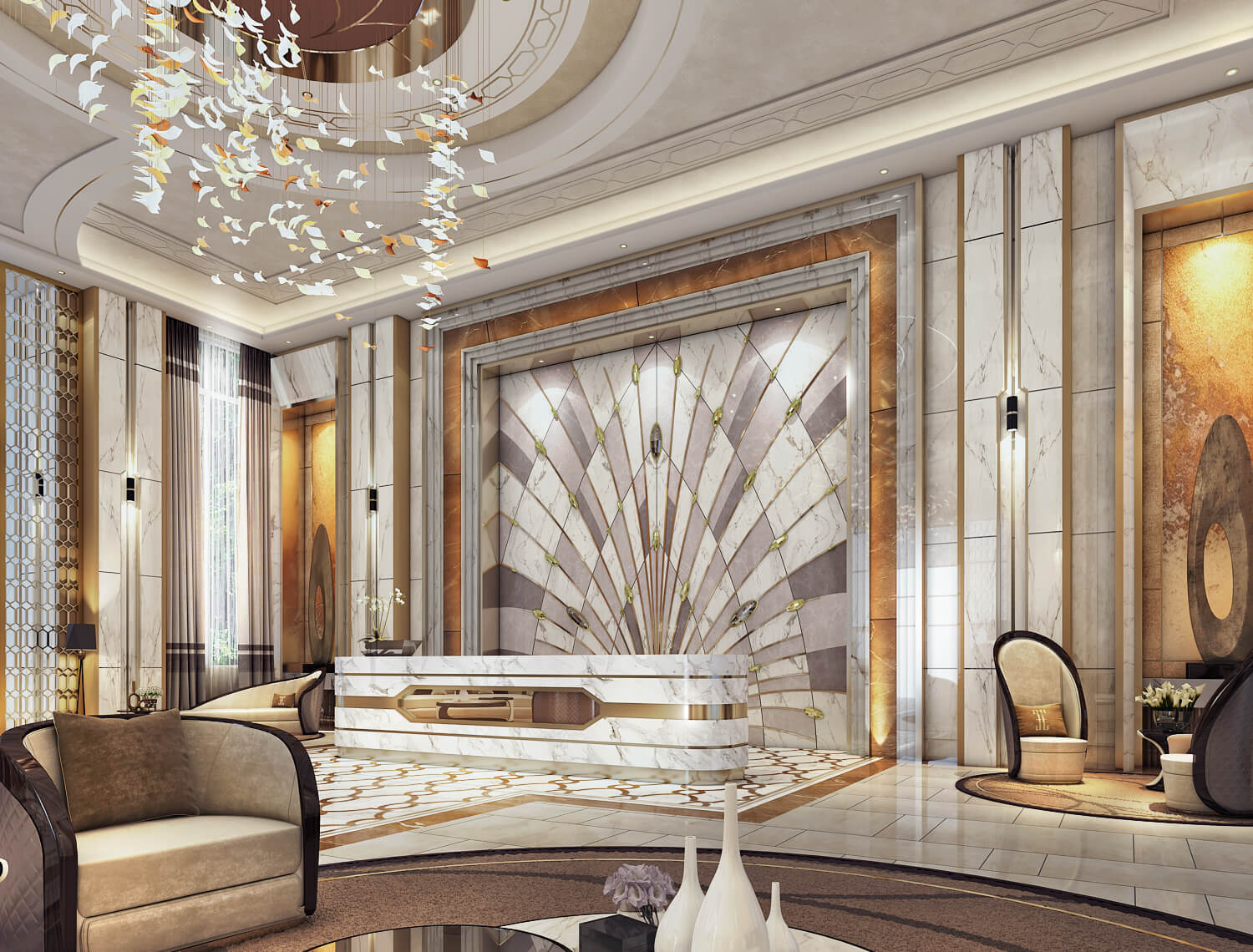Interior Design Styles

Luxury interior designers – The world of luxury interior design encompasses a diverse array of styles, each with its own distinct characteristics, key elements, and color palettes. From the timeless elegance of classicism to the cutting-edge modernity of contemporary design, there is a style to suit every taste and preference.
Classicism
Classicism, inspired by ancient Greek and Roman architecture, exudes an aura of grandeur and sophistication. Key elements include symmetrical layouts, clean lines, and the use of natural materials such as marble, wood, and stone. Color palettes often feature neutral hues like white, beige, and gray, complemented by rich accents of gold and navy.
Iconic projects that exemplify classicism include the Palace of Versailles in France and the White House in the United States.
Neoclassicism
Neoclassicism, a revival of classical principles during the 18th and 19th centuries, introduced a lighter and more playful touch to the grandeur of classicism. Key elements include delicate moldings, pastel colors, and the use of floral motifs. Color palettes often feature soft shades of blue, pink, and green, complemented by white and gold.
Iconic projects that exemplify neoclassicism include the Petit Trianon in France and the Marble House in Newport, Rhode Island.
Rococo
Rococo, an offshoot of neoclassicism, is characterized by its exuberance and asymmetry. Key elements include curved lines, intricate carvings, and the use of gilding and mirrors. Color palettes often feature pastel hues like pink, blue, and yellow, complemented by gold and white.
Iconic projects that exemplify rococo include the Amalienburg Palace in Germany and the Palace of Schönbrunn in Austria.
Gothic, Luxury interior designers
Gothic, inspired by medieval architecture, evokes a sense of mystery and grandeur. Key elements include pointed arches, stained glass windows, and the use of dark wood and stone. Color palettes often feature deep hues of red, blue, and green, complemented by gold and black.
Luxury interior designers often incorporate intricate and visually stunning elements into their designs. One such element that has gained popularity in recent years is mandala wall art. These intricate circular patterns, often featuring vibrant colors and geometric designs, add a touch of bohemian flair to any space.
By incorporating mandala wall art into their designs, luxury interior designers create spaces that are both visually captivating and deeply spiritual.
Iconic projects that exemplify gothic include the Notre Dame Cathedral in France and the Westminster Abbey in England.
Renaissance
Renaissance, a revival of classical principles during the 14th and 16th centuries, introduced a renewed focus on humanism and realism. Key elements include symmetrical layouts, harmonious proportions, and the use of natural materials like marble, wood, and stone. Color palettes often feature warm hues like red, orange, and yellow, complemented by blue and green.
Iconic projects that exemplify renaissance include the Uffizi Gallery in Italy and the Château de Fontainebleau in France.
Baroque
Baroque, an offshoot of renaissance, is characterized by its grandeur and opulence. Key elements include elaborate moldings, curved lines, and the use of gilding and marble. Color palettes often feature rich hues like red, gold, and blue, complemented by white and black.
Iconic projects that exemplify baroque include the Palace of Versailles in France and the St. Peter’s Basilica in Italy.
Luxury interior designers are always looking for ways to add a touch of elegance to their clients’ homes. One way to do this is to use tiered tray decor. Tiered trays are a great way to display a variety of items, from candles and flowers to jewelry and keepsakes.
They can be used in any room of the house, and they can be customized to fit any style. For more ideas on how to use tiered tray decor, check out this blog post: Tiered Tray Decor. Luxury interior designers can use tiered tray decor to add a touch of sophistication to any space.
Art Nouveau
Art Nouveau, a style that emerged in the late 19th and early 20th centuries, is characterized by its organic forms and flowing lines. Key elements include the use of natural materials like wood, glass, and metal, and the incorporation of floral and botanical motifs. Color palettes often feature soft hues like green, blue, and purple, complemented by gold and white.
Iconic projects that exemplify art nouveau include the Casa Batlló in Spain and the Tiffany House in New York City.
Art Deco
Art Deco, a style that emerged in the 1920s and 1930s, is characterized by its geometric forms and bold colors. Key elements include the use of chrome, glass, and lacquer, and the incorporation of geometric and stylized motifs. Color palettes often feature bright hues like red, blue, and green, complemented by black and white.
Iconic projects that exemplify art deco include the Chrysler Building in New York City and the Hoover Building in Washington, D.C.
Mid-Century Modern
Mid-century modern, a style that emerged in the 1950s and 1960s, is characterized by its clean lines, simple forms, and the use of natural materials like wood, leather, and metal. Color palettes often feature neutral hues like white, beige, and gray, complemented by bright accents of orange, yellow, and blue.
Iconic projects that exemplify mid-century modern include the Eames House in California and the Glass House in Connecticut.
Contemporary
Contemporary, a style that emerged in the 1970s and continues to evolve today, is characterized by its focus on functionality, sustainability, and the use of innovative materials. Key elements include open floor plans, large windows, and the use of natural light. Color palettes often feature neutral hues like white, beige, and gray, complemented by bold accents of color.
Iconic projects that exemplify contemporary design include the Burj Khalifa in Dubai and the One World Trade Center in New York City.
Materials and Finishes: Luxury Interior Designers

When it comes to luxury interior design, the materials and finishes used play a pivotal role in creating a space that exudes opulence and sophistication. These materials are not only visually stunning but also possess exceptional properties that ensure durability and longevity.
From the finest marbles and granites to exotic woods and luxurious fabrics, high-end interior designers carefully select each material for its unique characteristics and aesthetic appeal.
Marble
Marble, a metamorphic rock formed from limestone, is a timeless choice for luxury interiors. Its elegant veining and rich color variations create a sense of grandeur and sophistication. Marble is highly durable, resistant to heat and scratches, making it ideal for high-traffic areas such as entryways and kitchens.
In recent years, innovative techniques have allowed designers to incorporate marble in unexpected ways. For instance, waterjet cutting has enabled the creation of intricate patterns and designs, while book-matching techniques showcase the natural beauty of the stone’s veining.
Granite
Granite, another metamorphic rock, is known for its exceptional durability and resistance to wear and tear. Its speckled appearance and wide range of colors make it a versatile choice for both traditional and contemporary interiors.
Granite is often used for countertops, flooring, and wall cladding. Its heat resistance makes it an excellent choice for kitchens, while its durability ensures longevity in high-traffic areas.
Exotic Woods
Exotic woods, such as mahogany, ebony, and rosewood, add a touch of warmth and richness to luxury interiors. These woods are prized for their unique grain patterns, deep colors, and exceptional durability.
Exotic woods are often used for furniture, cabinetry, and flooring. Their natural beauty and durability make them a timeless investment for any luxury home.
Luxurious Fabrics
Luxurious fabrics, such as silk, velvet, and cashmere, create a sense of opulence and comfort in interior spaces. These fabrics are soft to the touch, visually appealing, and possess exceptional durability.
Silk, known for its lustrous sheen and drape, is often used for curtains, upholstery, and bedding. Velvet, with its plush texture and rich colors, adds a touch of elegance to furniture and wall coverings. Cashmere, renowned for its warmth and softness, is a luxurious choice for throws, blankets, and scarves.
3. Furniture and Decor

The world of luxury furniture and decor is a realm of exquisite craftsmanship, timeless design, and unparalleled comfort. Leading brands and designers have dedicated their artistry to creating pieces that elevate living spaces into havens of sophistication and indulgence.
The design principles guiding high-end furniture and decor emphasize balance, proportion, and attention to detail. Master artisans employ traditional techniques passed down through generations, ensuring each piece is a testament to impeccable craftsmanship.
Iconic Furniture Designs
Throughout history, certain furniture designs have become iconic, leaving an indelible mark on the industry. Here are a few notable examples:
- Barcelona Chair by Mies van der Rohe: This minimalist masterpiece, designed in 1929, embodies the Bauhaus philosophy of “form follows function” with its clean lines and luxurious leather upholstery.
- Eames Lounge Chair by Charles and Ray Eames: This mid-century modern classic combines comfort and style with its molded plywood shell and plush cushions.
- Noguchi Table by Isamu Noguchi: Inspired by Japanese aesthetics, this organic-shaped table features a sculpted base and a glass top that seems to float effortlessly.
These iconic designs continue to inspire contemporary furniture makers, showcasing the enduring legacy of masterful craftsmanship and timeless aesthetics.